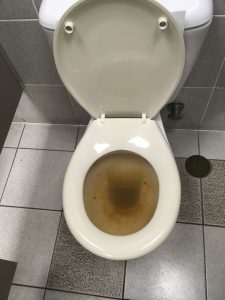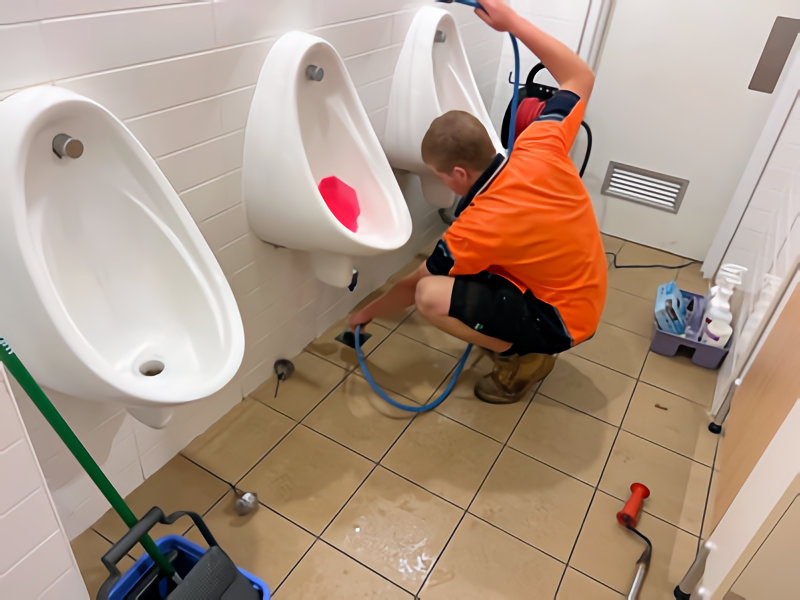
The Future of Flushable Products: A Comprehensive New Standard AS/NZS 5328:2022 Flushable Products
New Flushable Products Standard: A Win for Whywait Plumbing and Our Customers Introduction
Here at Whywait Plumbing, we have long advocated for clear guidelines around using and labelling flushable products. But unfortunately, we’ve seen far too many instances of blockages, overflowing drains, and the ensuing damage to properties and infrastructure due to the misuse of such products.
So from our perspective, sharing the recent news about releasing the new Flushable Products Standard is positive. After all, We’ve done media interviews on this, plus written countless blogs and newsletter articles:
-
False Claims on Flushable Wipes Result In $700,000 Federal Court Fine
-
Flushable Wipes Are An Environmental Nightmare
-
Flushable Wipes Create $16000 Plumbing Repairs Bills
-
Gold Coast Sewer Blockages – Who’s Responsible & Who’s Paying?
-
Flushable Wipes Win “Shonky Award” from CHOICE
The Water Services Association of Australia (WSAA) has released the new Flushable Products Standard (PAS 2845.1:2022), which provides manufacturers and consumers with clear guidance on the proper use and disposal of flushable products. In this blog post, we’ll explore the critical aspects of this new Standard and discuss how it aligns with Whywait Plumbing’s long-held beliefs on the issue.
The Importance of the Flushable Products Standard
Addressing the Drain Blockage Problem
Whywait Plumbing has been advocating for these changes mainly because of the immense problem of drain blockages caused by flushing inappropriate items down the toilet. According to the WSAA, approximately 75% of sewer blockages are caused by flushing non-flushable items, costing millions of dollars annually to rectify.
This has led to environmental issues and costly repairs for homeowners and local water authorities. The new Flushable Products Standard aims to reduce the incidence of blockages and save money for everyone involved, making it a welcome development for plumbers and homeowners alike.
Clear Guidelines for Manufacturers
One of the critical aspects of the new Standard is the provision of clear guidelines for manufacturers of flushable products. This includes stringent testing requirements to ensure that only genuinely flushable products can be marketed as such. The Standard also mandates clear labelling, helping consumers make informed choices about what they flush down their toilets.
This means that manufacturers will now have to adhere to these guidelines, ensuring that their products meet the criteria to be deemed flushable. This will help reduce the number of inappropriate items being flushed, leading to fewer blockages and plumbing problems.
How Will The Symbol Be Displayed
The symbols for packaging indicating that a product has passed the criteria in the Standard and is safe for flushing can vary. However, they are typically simple, easily recognisable icons that convey the message. For example, for products that are safe to flush, the symbol might consist of a toilet with a checkmark, signifying that the item can be flushed without causing harm to the plumbing system or the environment.
Conversely, if a product is unsuitable for flushing, the symbol might depict a toilet with a crossed-out circle, indicating that the item should not be flushed. This “do not flush” symbol is crucial for products with a high potential to be flushed, as it helps inform customers about the appropriate disposal method.
In both cases, the symbol should be prominently visible on the on-shelf package, unobscured by packaging seals or folds, ensuring that consumers can quickly identify whether the product is flushable. Again, the goal is to provide consumers with clear, easily understood information, helping them make responsible choices for their plumbing systems and the environment.

How Does A Product Qualify to Be Flushable?
To qualify for the new Flushable Products Standard and display the flushable logo, products must undergo a series of tests and meet specific criteria outlined in the Standard. These tests ensure the product is safe for flushing and will not harm the plumbing system or the environment. Here are the seven steps a product must pass to qualify:
- Clears the toilet and household drain line: The product must pass through the toilet and the household drain line without causing blockages or damage to the plumbing system.
- Doesn’t foul household sewage pumps: The product must not clog or interfere with the proper functioning of household sewage pumps.
- Disintegrates quickly to prevent sewer blockages: The product must break down rapidly once it enters the sewer system to ensure that it does not cause blockages or damage to the sewer infrastructure.
- Doesn’t foul council sewer water utility pumps: The product must not cause any problems or blockages in municipal water utility pumps, ensuring that the more extensive sewage treatment system remains functional.
- Settles out in a sewage plant: The product must settle out in a sewage treatment plant, allowing it to be correctly processed and treated without causing issues in the sewage plant.
- Biodegrades: The product must be able to biodegrade naturally, ensuring that it does not contribute to environmental pollution or harm aquatic life.
- Doesn’t contain plastics (via an attestation): Manufacturers must attest that their product does not contain any plastics, helping to reduce the amount of plastic waste entering our waterways and sewer systems.
By meeting these requirements, a product can qualify for the Flushable Products Standard and display the flushable logo on its packaging. This provides consumers with clear information about the product’s suitability for flushing, helping them make responsible choices for their plumbing systems and the environment.

How the Flushable Products Standard Aligns with Whywait Plumbing’s Beliefs
Prioritising the Health of Our Waterways and Infrastructure
At Whywait Plumbing, we have always believed in maintaining the health of our waterways and infrastructure. The new Flushable Products Standard is a significant step in this direction. It will help prevent the clogging of our sewer systems and the pollution of our waterways with non-flushable waste.
By ensuring that only genuinely flushable products can be marketed as such, we can collectively reduce the strain on our water infrastructure and preserve the environment for future generations.
Empowering Consumers with Accurate Information
Another critical aspect of the Flushable Products Standard that aligns with our beliefs is the focus on providing consumers with accurate information about the products they use. With precise labelling requirements, consumers will be better informed about which items are safe to flush and which should be disposed of in other ways.
This empowers individuals to make better choices for their homes and the environment, helping to reduce the number of blockages and plumbing issues caused by flushing inappropriate items.
A Positive Step for the Plumbing Industry and the Environment
The release of the Flushable Products Standard (PAS 2845.1:2022) is a significant milestone in the fight against drain blockages and the associated environmental and financial costs. By providing clear guidelines for manufacturers and empowering consumers with accurate information, this Standard will help to reduce the number of blockages caused by non-flushable items.
As a long-time advocate for these changes, Whywait Plumbing is delighted to see this progress. It remains committed to promoting responsible flushing practices and educating our customers about the importance of these new guidelines. We believe this Standard will positively impact the plumbing industry, the environment, and the overall health of our water infrastructure.
Our Commitment to Client Education
At Whywait Plumbing, we understand that many of our customers may not be aware of the new Flushable Products Standard and the implications it has for their daily lives. As a result, we are dedicated to educating our customers about the importance of following these guidelines and how they can help prevent blockages and protect the environment.
We will update our website, social media channels, and other educational materials to reflect the latest information on flushable products and the new Standard. Additionally, our team of skilled plumbers will be available to advise and answer any questions our customers may have regarding the proper use and disposal of flushable products.
Future Developments and Ongoing Advocacy
While releasing the Flushable Products Standard is a significant achievement, we at Whywait Plumbing believe there is always room for improvement and further progress. Therefore, we will continue to advocate for stricter guidelines, increased public awareness, and ongoing research into developing truly flushable products that do not harm our waterways and infrastructure.
We will also remain vigilant in monitoring the implementation and enforcement of the new Standard, ensuring that manufacturers comply with the guidelines and that consumers have access to accurate and up-to-date information. We aim to be crucial in driving positive change within the plumbing industry and beyond by staying active in this space.
Tips for Preventing Drain Blockages
While the Flushable Products Standard is a significant step in the right direction, everyone needs to play their part in preventing drain blockages. Here are some practical tips for ensuring your plumbing system stays in top shape:
Only flush the “Three P’s”: Always remember that the only items that should be flushed down the toilet are pee, poo, and toilet paper. Everything else, including wet wipes, facial tissues, and sanitary products, should be disposed of in the trash.
Dispose of fats, oils, and grease (FOG) responsibly: FOG can solidify in your pipes and cause blockages. Instead of pouring them down the sink, collect them in a container and dispose of them in the trash once cooled.
Install drain screens: Placing a drain screen over your sink, shower, and bathtub drains can help catch hair, soap scum, and other debris, preventing them from entering your pipes and causing blockages.
Schedule regular plumbing maintenance: Having a professional plumber inspect and clean your plumbing system regularly can help identify and address potential issues before they become significant problems.
Whywait Plumbing: Your Partner in Responsible Plumbing Practices
As a company that has long advocated for responsible plumbing practices and the proper use of flushable products, Whywait Plumbing is proud to support the implementation of the new Flushable Products Standard. We believe this Standard will decrease drain blockages, benefiting homeowners and the environment.
If you have any questions about the new Standard or need assistance with your plumbing system, please don’t hesitate to contact us at Whywait Plumbing. Our experienced professionals are always here to help you with your plumbing needs, ensuring your home’s plumbing system remains in top condition.









